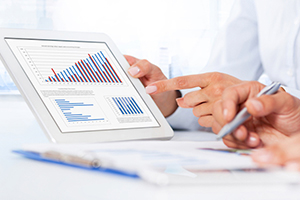 Salesfloor has always been one of the key indicators of retail success and it stayed the same over the years. Some stores might have higher traffic numbers, but when these figures are analyzed, it is found out that the conversion rates are lower or vice versa. With today’s technological transformation, retailers can now utilize cloud software data and real-time analytics that are obtained from people counters to analyze and make a strategic decision. As a result, their sales figures and conversion rates increase, especially with the sales floors’ utilization.
Salesfloor has always been one of the key indicators of retail success and it stayed the same over the years. Some stores might have higher traffic numbers, but when these figures are analyzed, it is found out that the conversion rates are lower or vice versa. With today’s technological transformation, retailers can now utilize cloud software data and real-time analytics that are obtained from people counters to analyze and make a strategic decision. As a result, their sales figures and conversion rates increase, especially with the sales floors’ utilization.
Advantages of Using a People Counter’s Cloud System
One of the advantages of using a people counter’s cloud system is to be able to view your sales floor analytics instantly from anywhere. Instead of waiting, now store managers can immediately follow traffic data and patters and calculate more accurate conversion rates. If needs be, they can even make some modifications accordingly.
 Depending on the cloud-based system data, which is provided with people counters, store managers can see the difference between over and under-selling products. More importantly, they will be able to analyze if this situation depends on the sales associates’ behaviour or if the store was understaffed at the point of sale. Once, they have clear data, they can improve the sales performance of these underselling products.
Depending on the cloud-based system data, which is provided with people counters, store managers can see the difference between over and under-selling products. More importantly, they will be able to analyze if this situation depends on the sales associates’ behaviour or if the store was understaffed at the point of sale. Once, they have clear data, they can improve the sales performance of these underselling products.
In addition to individual product sales performances, store managers can also benchmark their stores’ sales performances as a whole with the analytical cloud data coming from the people counters. Instead of making assumptions or using only traffic data, managers can look at many different metrics and indicators in real-time to see the top performers. Once the underperforming stores face the waters, it is more convenient and accurate for managers or owners to make correct business decisions.
At last, but essentially the most important KPI for determining the conversion rates is the “fitting room” analysis. According to a research;
- “Shoppers, who use the fitting rooms, are nearly 7 times likely to purchase products”.
- “Shoppers, who enter the fitting room on a regular basis, are twice as likely to make a purchase”.
- “Shoppers, who receive a satisfactory customer service in the fitting room, are 3 times as likely to buy products”.
- “If a visitor does not visit the fitting room, she/he is twice as less likely to purchase the items”.
Once the managers analyze the fitting room data, they will be able to see what is missing in terms of customer service and time management. This way they will reduce the abandonment rate and increase customer satisfaction, and in fact turn their shoppers into frequent buyers.
Overall, retailers now have a bigger opportunity to analyze and make their business decisions according to the analytical cloud data that is received through people counters. They can certainly make use of their “sales floors” more effectively and also follow how their sales associates behave around customers. Retailers should use this analytical information to adapt their procedures and in-store sales processes accordingly. In the long run, these data-driven solutions escalate the sales figures and increase customer satisfaction.







